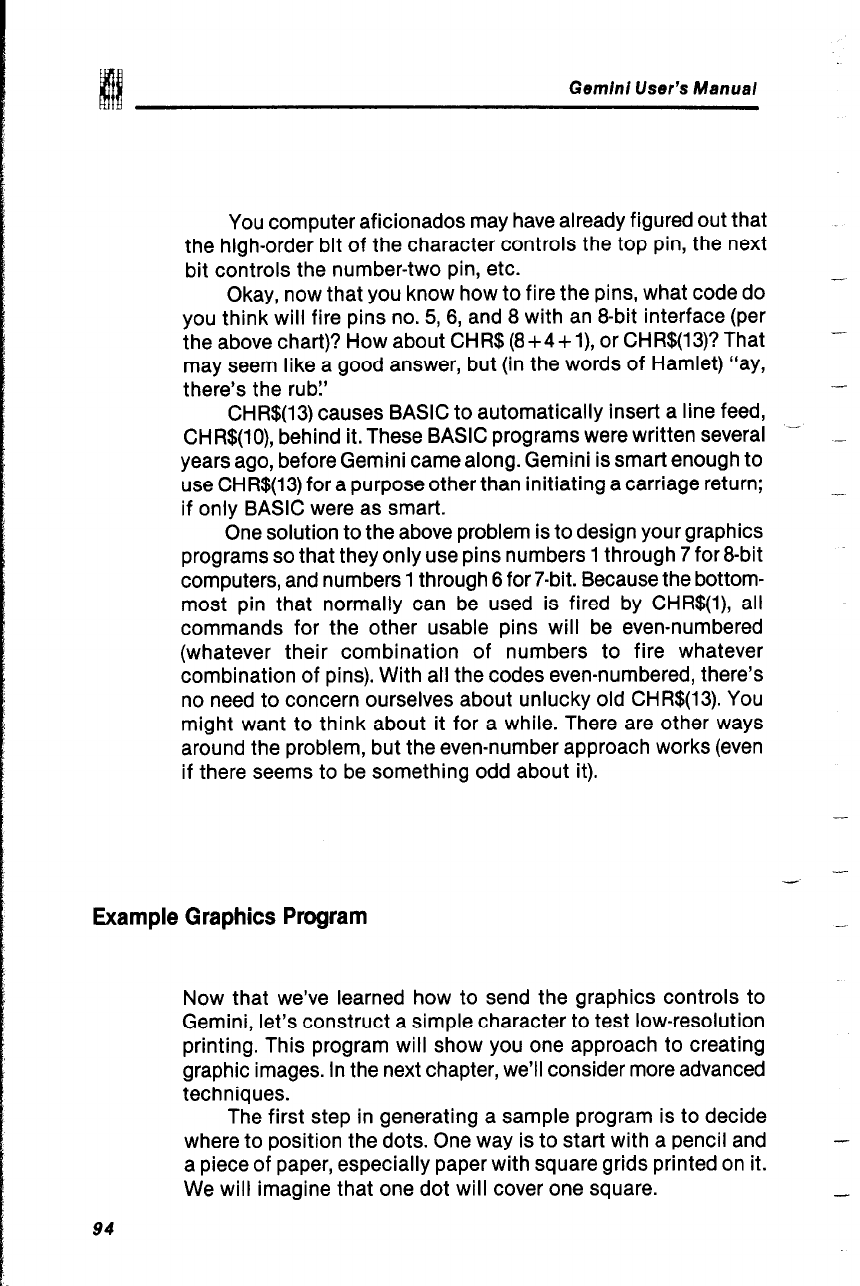
Gemini User’s Manual
You computer aficionados may have already figured out that
the high-order bit of the character controls the top pin, the next
bit controls the number-two pin, etc.
Okay, now that you know how to fire the pins, what code do
you think will fire pins no. 5,6, and 8 with an 8-bit interface (per
the above chart)? How about CHR$ (8+4+1), or CHR$(13)? That
may seem like a good answer, but (in the words of Hamlet) ‘lay,
there’s the rub:’
CHR$(13) causes BASIC to automatically insert a line feed,
CHR$(lO), behind it. These BASIC programs were written several
-
years ago, before Gemini came along. Gemini is smart enough to
use CHR$(13) for a purpose other than initiating a carriage return;
if only BASIC were as smart.
One solution to the above problem is to design your graphics
programs so that they only use pins numbers 1 through 7 for 8-bit
computers, and numbers 1 through 6 for 7-bit. Because the bottom-
most pin that normally can be used is fired by CHR$(l), all
commands for the other usable pins will be even-numbered
(whatever their combination of numbers to fire whatever
combination of pins). With all the codes even-numbered, there’s
no need to concern ourselves about unlucky old CHR!$(13). You
might want to think about it for a while. There are other ways
around the problem, but the even-number approach works (even
if there seems to be something odd about it).
-
-
-
-
Example Graphics Program
Now that we’ve learned how to send the graphics controls to
Gemini, let’s construct a simple character to test low-resolution
printing. This program will show you one approach to creating
graphic images. In the next chapter, we’ll consider more advanced
techniques.
The first step in generating a sample program is to decide
where to position the dots. One way is to start with a pencil and
a piece of paper, especially paper with square grids printed on it.
We will imagine that one dot will cover one square.
94


















